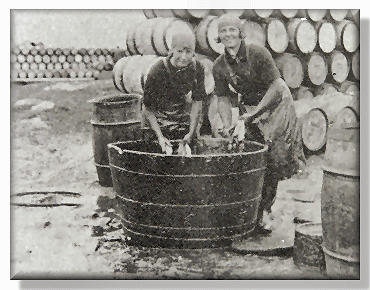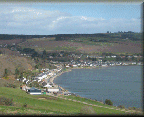


Mrs Reid had nine children: her husband was a fisherman who no doubt relied on her to sell the fish he caught. She would line her basket with fresh paper and set off to Fortrose early in the morning to sell her fish. In the old days there was a barter system in operation where fish would be exchanged for food etc, but in Mrs Reid’s day the fish would be sold for cash.
The children of the household would come home from school and rock the cradle while their mother worked in the home, a chore that did not go down too well it seems. “There would be a fight on some nights about whose turn it was to rock the cradle.” (Jean Skinner – Mrs Reid’s daughter)
The women’s life in Avoch was much harder than for their daughters and grand-daughters nowadays, who have the mod cons of washing machines and electricity. “No firewood was sold at the door, and the women would go to the woods for firewood, and take their water from the village pumps to do their washing.” Not an easy task in a wooden tub called a “say” especially when one’s husband was a fisherman! In the old days before lavatories, waste would be disposed into the sea, and later into the septic tanks at the bottom of the streets. These were provided by James Douglas Fletcher of Rosehaugh. The tanks were wooden boxes and many an unfortunate coming home late at night had accidents and fell into these tanks on their way home.
